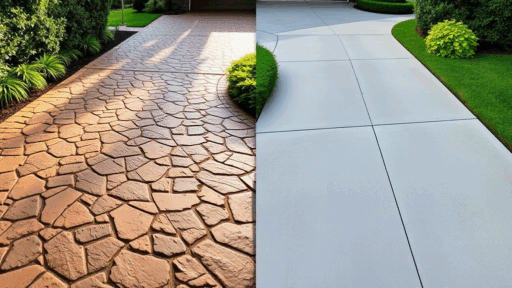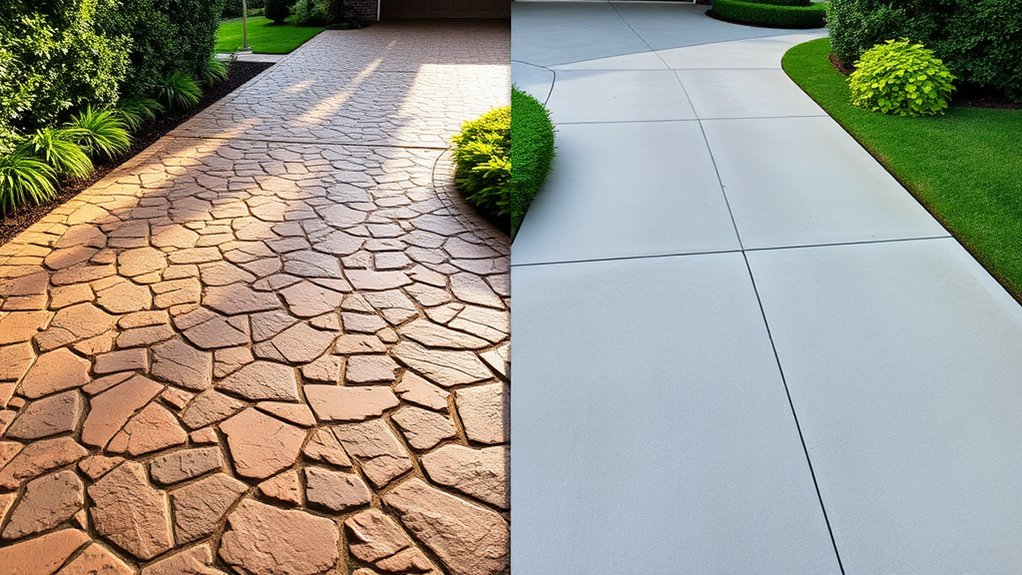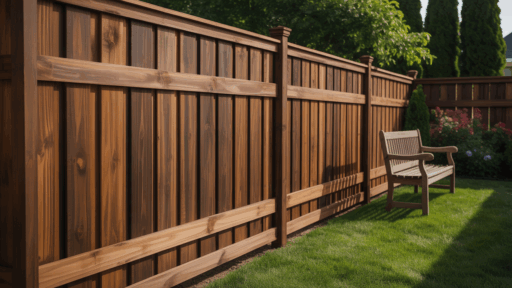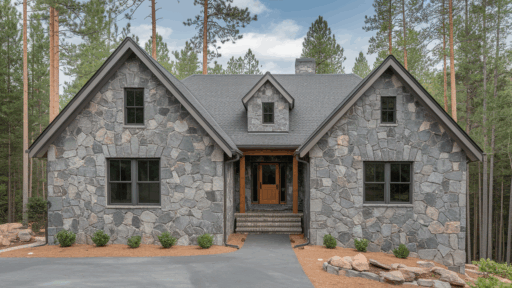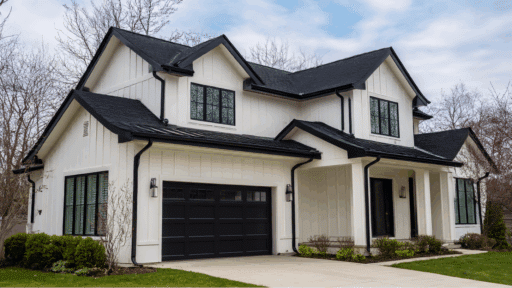When upgrading a property’s curb appeal or improving walkability around the home, homeowners often face a key question: Should I choose stamped or plain concrete for my walkway? At first glance, both options offer durability and low maintenance. But dig a little deeper, and the differences in aesthetics, cost, longevity, and value become much clearer.
This article walks you through the pros and cons of stamped and plain concrete walkways—so you can make the most informed choice for your budget, lifestyle, and home’s future resale value.
Understanding the Basics: What’s the Difference?
Let’s start with the fundamentals.
Plain concrete walkways—also called broom-finished or standard concrete—feature a simple, uniform gray surface. They’re widely used in residential and commercial settings because of their affordability and function-first design.
Stamped concrete, on the other hand, is patterned, textured, or colored to resemble materials like brick, stone, slate, or even wood. It’s poured just like regular concrete but then molded with stamping tools before it sets.
Think of plain concrete as your reliable sedan, while stamped concrete feels more like a custom paint job on a high-end model: the same core, but a very different impression.
Visual Appeal: Is It Style or Substance?
When it comes to curb appeal, stamped concrete often wins in a landslide.
Walkways are one of the first elements visitors or potential buyers notice. A stamped design can mimic natural stone or cobblestone at a fraction of the price—and with much less maintenance than actual pavers or bricks.
Plain concrete, while neat and functional, offers minimal visual impact. You can color or tint it slightly, but the finish typically feels utilitarian.
If you’re a homeowner focused on aesthetics or planning to sell in the next few years, stamped concrete could give your property that extra polish buyers remember.
Cost Considerations: Upfront vs. Long-Term Investment
It’s no surprise that stamped concrete comes at a higher upfront cost. On average, it can run between $12 to $18 per square foot, depending on complexity and finish, while plain concrete costs around $6 to $10 per square foot.
That said, here’s where the investment debate gets interesting.
- Stamped concrete offers a high-end look for less than stone or brick.
- Plain concrete is budget-friendly upfront but may look outdated faster.
Also, if you’re in a region with harsh freeze-thaw cycles, plain concrete may crack more visibly. While stamped concrete may also crack, the patterns tend to disguise imperfections more gracefully.
Pro Tip: Sealing stamped concrete every few years helps extend its life and keep colors vibrant—something plain concrete doesn’t require but also doesn’t benefit from.
Maintenance Needs: Which Is Easier Over Time?
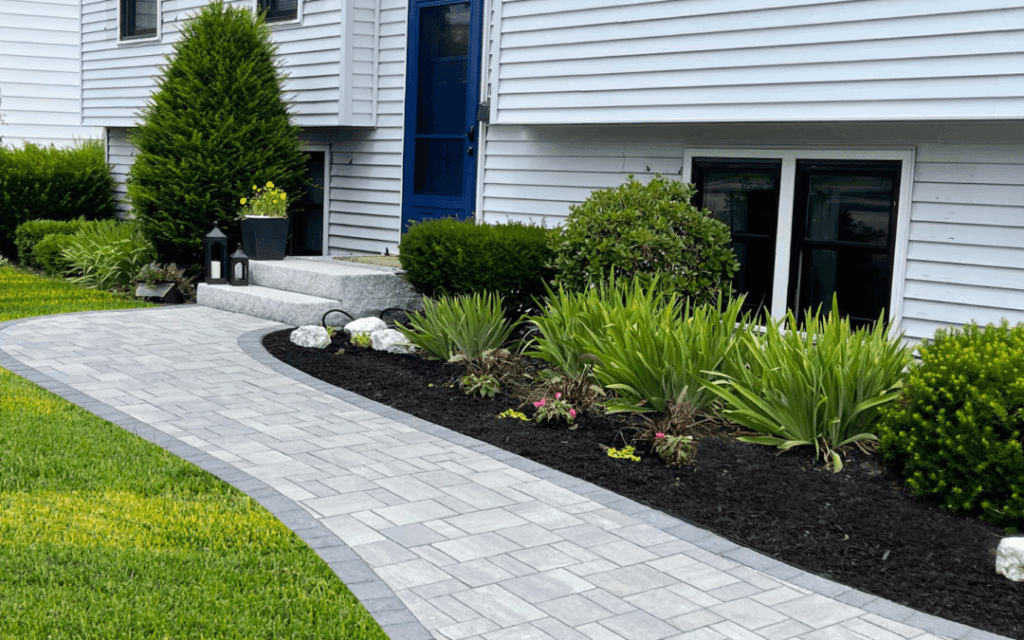
Both types of concrete are low-maintenance compared to alternatives like wood decking or gravel paths. But there are trade-offs.
Plain Concrete Maintenance:
- Occasional power washing.
- Resealing (optional) every few years.
- Surface cracks are more visible over time.
Stamped Concrete Maintenance:
- Sealing is essential to protect color and texture.
- Can be slippery when wet unless additives are used.
- Slightly more prone to wear in high-traffic areas due to surface detailing.
If you’re aiming for simplicity and minimal upkeep, plain concrete edges ahead. But if you’re willing to invest a bit of time every few years, stamped surfaces can stay beautiful for a decade or more.
Durability and Lifespan: Which Lasts Longer?
Concrete in general is known for its 30+ year lifespan, provided it’s installed properly and maintained.
The real difference lies not in the material itself but in the finishing technique and how well it handles traffic, weather, and wear.
- Stamped concrete can wear unevenly if not sealed properly or if installed on uneven ground.
- Plain concrete tends to show wear more consistently and is easier to patch if cracking occurs.
One important note: stamped concrete repairs are more noticeable unless you match the pattern and coloring precisely—a difficult feat for DIYers.
Resale Value: Which Adds More to Your Property?
A well-designed walkway—especially one that matches your home’s architecture—can contribute to higher perceived value.
According to real estate professionals, stamped concrete tends to boost curb appeal and attract more buyer attention, especially in competitive markets. It’s a cost-effective way to add a “custom” feel without fully renovating your exterior.
That said, if your neighborhood primarily features basic concrete paths, an overdesigned walkway might look out of place. Context matters.
Environmental Impact: Which Is More Sustainable?
From a sustainability perspective, both options share similar raw materials. However, stamped concrete uses color hardeners, sealers, and additional finishing agents, which may increase its chemical footprint slightly.
That said, stamped concrete often lasts longer without needing overlays or replacement, especially if sealed and maintained, making it a smart long-term eco choice.
Conclusion
Deciding between stamped and plain concrete walkways goes beyond surface aesthetics—it’s a strategic choice that influences your property’s curb appeal, resale value, and ongoing maintenance requirements.
Plain concrete offers a dependable, cost-effective solution, while stamped concrete delivers a distinctive, high-end look that can elevate your outdoor space—particularly valuable in upscale neighborhoods or for homes with heavy foot traffic.
For homeowners aiming to enhance their landscaping investment or increase property value, stamped concrete often offers a long-term return through visual impact and custom design. However, if you’re focused on functionality, durability, and minimal maintenance, plain concrete remains a trusted and practical choice.
At the end of the day, the ideal walkway is one that aligns with your goals, complements your home’s exterior, and fits within your budget. Landscaping companies can be a great resource in helping you evaluate the pros and cons of each option. A professional consultation with a local concrete and landscaping expert can ensure your walkway is both beautiful and built to last.

